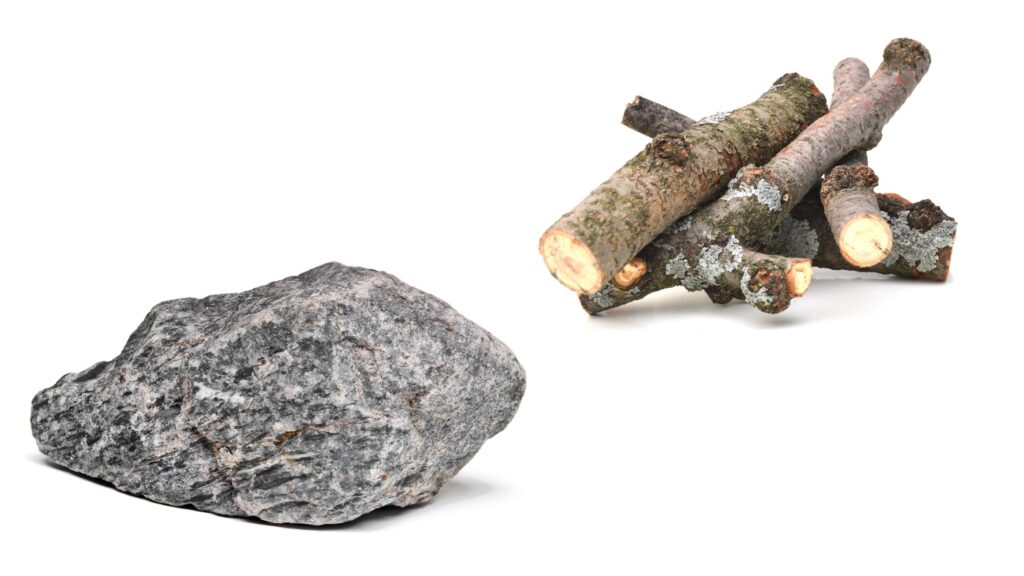When you’re taking a trip to the great outdoors for some camping, it can be comforting to have your gear right with you. However, certain terrains and conditions can make that comfort level hard to come by.
If you’re thinking about pitching up your tent while on your camping trip, then you’ll need to secure it first. Securing your tent can keep it from blowing away in high winds or shifting when there’s no ground underneath it. In this article, we’ll cover everything you need to know about securing a tent without stakes while camping.
Are stakes necessary to secure a tent?
When it comes to staking your tent, it really depends on the camping environment you’ll be in. If you’re car camping in a designated campsite with a windy area, then you’ll likely need stakes to secure your tent. But if you’re backpacking or camping in a more wilderness-type setting, then you may not need stakes at all. There are a few different ways to stake your tent without using traditional metal or plastic stakes. One way is to use heavy rock or large sticks.
You can simply tie your tent pegs lines to these larger objects and they will help hold down your tent. Another way is to use your tent poles. If you have them in your camping gear, you can use them to help prop up your tent. And finally, if you’re really in a pinch, you can always just tie your guy lines to trees nearby. So as you can see, there are a few different ways to stake your tent without using traditional stakes. It really just depends on the environment you’ll be camping in and what resources you have available to you.
5 Methods to Secure your Tent without stakes

One of the most important parts of camping is securing your tent so that it does not blow away in the middle of the night. There are a few different ways that you can do this without using traditional stakes. One method is to use rocks or other heavy objects to weigh down the corners of your tent. Another is to tie your tent to trees or other large objects. If there are no trees or rocks available, you can also bury your tent’s guy lines in the ground. Whichever method you choose, be sure to practice beforehand so that you know how to set up your tent quickly and securely in case of an emergency. With a little bit of planning, you can ensure that your camping trip is safe and enjoyable for everyone involved. Below are some of the ways that will surely save you the hassle-
There are a number of alternatives that can be used in place of tent stakes, which can come in handy if you find yourself in a situation where you don’t have any stakes on hand. Here are four options:
1. How Heavy rocks or wood logs can help?

If you have some heavy rocks or logs available, you can use them to weigh down your tent. Simply tie the corners of your tent to the rocks or logs, and they should provide enough weight to keep your tent in place. This method is one of the most common and the best so far, you just need to find 4 big suitable-sized rocks or wooden logs with no sharp edges near your campsite which are heavy enough to hold your tent in place and tie them with the corners of your tent using ropes, strings or even shoe laces if in case the required material is not available. if you don’t have shoelaces as well, then you can use the rocks by placing them on the corners of your tent to weigh it down as a last resort.
2. Tying to trees is a good idea
If there are trees nearby, you can use them to anchor your tent. Just make sure that you use sturdy ropes or cords so that your tent doesn’t come crashing down in the middle of the night! Look for trees near enough to one another to tie with and secure your tent without stakes. Also, be aware if the trees are damaged from the point you are tying it with your tent, which can also be done using guy lines.
3. Bag of soil or sand is all you need
A bag of soil or sand can also be used to weigh down your tent. Simply fill the bag with whatever material you have available and tie it to the corner of your tent. This technique is especially useful if you’re camping in an area with no rocks or logs, maybe near a beach! You will need at least 4-6 trash bags and something to pick up the soil or sand and fill in the bags. You need to fill all the bags with sand or soil and tie the top of the bag carefully without damaging it. Then you need to keep the bags on the corners of your tent so that the weight of the bags will hold the tent in place and avoid blowing with the wind. be aware of pointy or sharp elements that might cause the bags to rip.
4. Anchor systems also works
There are also commercial anchor systems available that can be used to secure your tent. These typically consist of a series of anchors that are driven into the ground, which then need to be connected to your tent via ropes or cords.
DIY Tent Stakes can secure your tent

DIY tent stakes can be made from a wide variety of materials. Wooden stakes, rock or concrete ones are all suitable. The size of the stake should be determined by the size of the tent. A good rule of thumb is to make stakes about two times as long as the length of your tent. This way, you’ll have enough room for them to bend without damaging your tent when they snap.
One important thing to keep in mind when making stakes is that they need to be sturdy enough to hold up against strong winds and/or heavy rain. If you’re planning on using your stakes on rough terrain, make sure they’re strong enough to withstand the beating, and don’t forget that sand, mud, snow, and other things can also damage your stakes. While it’s possible to find wooden stakes at some outdoor stores, and even some hardware stores if you want to save money and space, you can also just make them yourself by cutting down some tree branches or branches from a bush.
Some Important Tips for your 1st DIY Tent Stake
There are numerous ways to secure a tent without stakes, including using bungee cords, rope, or webbing. Even some tarps offer built-in stakes that keep the tent in place and prevent it from blowing away in the wind. When using any method of securing a tent without stakes, be sure to anchor the tent well to avoid any accidents. There are also some areas where tents can’t be pitched without stakes. These include beaches, swimming pools, and lakes (unless you’re camping on a pontoon boat). A tarp is an easy way to secure a tent with no stakes. Simply use webbing or rope to tie down one corner of your tarp so it doesn’t blow away in the wind. You can also use other methods like bungee cords or guy lines to make sure your tarp stays put.
FAQ
How to keep a beach tent from blowing away?
there are some simple ways to keep your beach tent in place without using any extra stakes. First, make sure the area where you’re planning to set up your beach tent is level. Then, use sandbags or rocks to weigh down the corners of the tent. Finally, spread out some sand or a tarp under the tent so that the wind won’t have as much room to pick it up and carry it away. These tips will go a long way toward keeping your beach tent from blowing away and keeping you from spending too much time cleaning up after yourself.
How much weight is required to hold a tent in place?
The best way to keep a tent from falling out is to tie it down well. There are a few different options for doing so. Make sure you stake the tent out properly before you go camping (this goes for both tents and hammocks). Even if your tent doesn’t look like it could be blown over in a stiff wind, there might still be enough tension on the stakes themselves to cause problems. This means you need to plan ahead and make sure they’re all secure. You can also use trees or other sturdy objects to help keep your tent steady in high winds.
How to prevent tents from blowing in the wind?
First, make sure that the tent is tied down at all corners with stakes and that the stakes are not being blown around by the wind. Secondly, make sure that the tent material is not too flimsy and that it is able to hold up to strong winds. Lastly, make sure that there are no sharp objects near where your tent is set up (sticks, rocks, etc.) so that you do not puncture or tear it.
